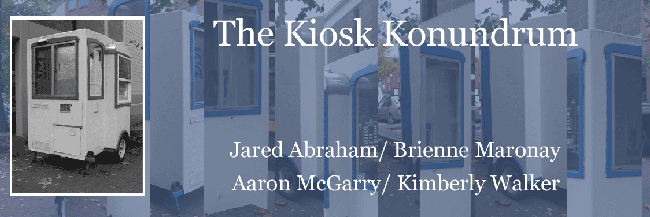
Alexander’s Great Falafel’s are a student staple at the University of Oregon. His customers are regulars because Alexander’s falafels are outstanding and his cheery personality keeps them coming back for more. The small kiosk, in which his falafel business resides, has become a permanent structure on the corner of thirteenth and Kincaid, right in front of the U of O bookstore. Alexander has contained all of his ingredients and cooking equipment into 32 sq ft of space in which he operates his business. It is the thermal comfort of this kiosk during the colder fall and winter months that we are interested in and decided to examine further. We wanted to find out how comfortable Alexander really is all day in his small workspace. Does he have to bundle up when it is cold outside or does he become to too hot for comfortably operate?
Alexander built the structure himself out of canvas and plywood siding with single pane windows. Everything he needs resides within arms reach. He has made small changes over a period of the ten years he has been open for business. Such alterations have been devised to better the kiosk and its thermal comfort functionality such as installing surplus insulation in the windows at night.
After talking with Alexander and studying the structure and its construction, we decided to concentrate our study on how well the kiosk holds heat within its building envelope. The resistance of three quarter inch plywood (according to MEEB table 4.2) is 0.93 R. Although this resistance would insulate rather well within a traditional building envelope, we speculate that when it is coupled with only canvas sheathing and no other insulating material, it will do little to resist heat loss. The walls appeared thin and quite permeable leading us to suspect poor thermal insulation. However, the heat produced from the stove and other equipment might compensate for heat loss, ultimately making the space a comfortable one. We asked ourselves: Was the space prone to excessive heat loss or could it adequately retain the heat produced by the average business day’s activities? Our case study is designed to find out how well the building envelope retains the day’s produced heat after business hours have ended and the outside temperatures begin to decline.